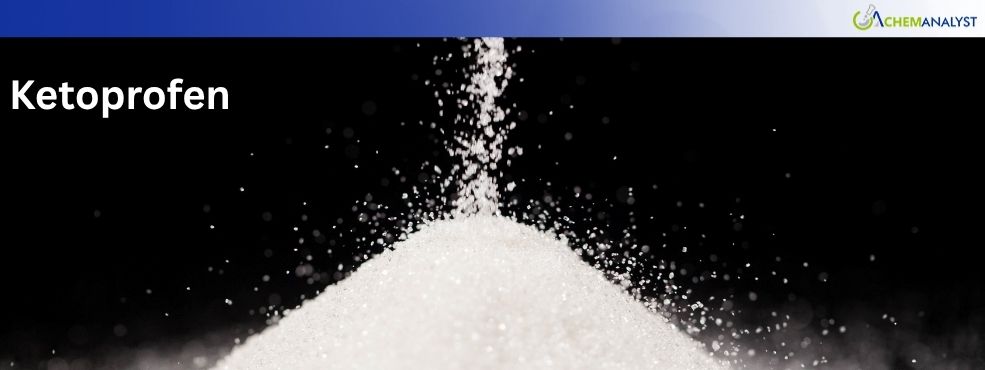Welcome To ChemAnalyst

Global Ketoprofen prices continued their sharp decline through June 2025, reshaping cost structures across pharmaceuticals, cosmetics, and biofuels. The downturn, driven by Chinese overcapacity, regulatory pressures, and surplus stocks, intensified as smaller Chinese players ramped up production amid large-scale plant shutdowns. Concurrently, Indian exporters faced stricter regulations, rising compliance costs, and weak international demand, further pressured by cheaper Chinese supplies. This has led to a global oversupply, causing significant price volatility and procurement challenges for downstream industries. While short-term cost benefits exist, the unpredictability complicates inventory and contract planning. Market players are urged to adopt agile strategies backed by real-time intelligence to stay competitive.
Global pharma markets are witnessing a broad transformation as Ketoprofen prices drift downward by early July 2025, resetting cost structures for top supply chains worldwide. The persistent price decline is a sign not only of the sophisticated forces moving within the pharma space, but also of the mounting imperative facing downstream industries to respond. This month's events have stirred up greater interest on the part of pharmaceutical, cosmetics, and biofuel producers that use Ketoprofen as a raw material of prime importance, with wider implications for global demand and sustainability agendas.
Ketoprofen is an NSAID that forms the core of pain, inflammation, and arthritis management, with uses going beyond prescription medicines, over-the-counter drugs, and veterinary medicines. Outside the USA, the remainder of the world considers Ketoprofen to be an active ingredient within topical treatments, cosmetics, and as a feedstock within in-house pharmaceutical production processes. Its position in global supply chains is stable, so that even minor price fluctuations create ripples within a range of industries that incorporate Ketoprofen as a strategic input.
Across June 2025, Ketoprofen prices remained to maintain their steep drop—a trend reinforced in the past month. The steepest decreases have been monitored in large markets like China and India, where producers experienced both regional and international headwinds. In China, a dramatic producer price index collapse and continued overcapacity compelled most Ketoprofen producers to slash margins in a last-ditch effort to sell off surplus stock. Large-scale shutdown for maintenance at various large Chinese Ketoprofen producing factories gave the smaller, more aggressive players the opportunity to boost production and inundate the market, increasing competition and leading to additional price cuts.
Meanwhile, Indian exporters struggled with stricter regulation enforcement and increasing compliance expenses while demand trailed in target markets, even amidst scenarios of low inventories. The continued readjustment of the global pharmaceuticals sector following the post-COVID normalization period supported this trend, with the majority of companies destocking inventory and resynchronizing procurement timelines. The flow of affordable Chinese Ketoprofen added further downward pressure, leading Indian suppliers to rebalance output volumes and price structures. These disruptions all combined to create an atmosphere of oversupply in which the pressure to sell inventory was most prevalent.
Downstream markets suffer most. To drug companies, reduced prices for Ketoprofen can widen profit margins in the short run; to cosmetic and biofuel producers who employ Ketoprofen because of its anti-inflammatory and additive qualities, volatility injects uncertainty into procurement and budget cycles. In the positive, companies enjoy short-run cost benefits, but unpredictable price fluctuations make inventory control and long-term contract arrangements difficult.
As the Ketoprofen pricing landscape becomes increasingly more volatile than ever, it is imperative that market participants, importers, exporters, and buyers are constantly updated and re-evaluate the strategy of procurement. Market participants are encouraged to consult market intelligence platforms and supply chain analysts regularly so that strategies are kept fresh on the basis of the latest real-time price action and regional patterns. During an era of indeterminate demand, competitive markets, and policy interventions, proactive intelligence and adaptive planning must become key to competitiveness in Ketoprofen-dependent industries.
We use cookies to deliver the best possible experience on our website. To learn more, visit our Privacy Policy. By continuing to use this site or by closing this box, you consent to our use of cookies. More info.
